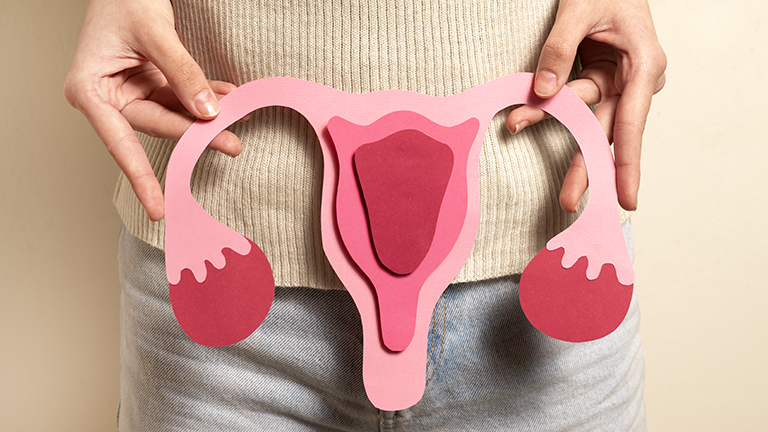Vaginismus is a condition where the vaginal muscles tighten involuntarily, making sexual activity, medical exams, or tampon use painful or difficult. This condition affects women of all ages and can lead to emotional stress, anxiety, and intimacy challenges. Fortunately, vaginismus exercises offer an effective and non-invasive way to manage symptoms. These exercises focus on strengthening and relaxing the pelvic floor muscles, improving flexibility, and reducing involuntary contractions. By combining techniques such as Kegels, vaginal dilators, yoga, and relaxation methods, women can gradually regain control, reduce discomfort, and enhance sexual health. Consistent practice, patience, and holistic care are key to overcoming vaginismus and improving overall well-being.
Understanding the Pelvic Floor (Vaginismus Exercises)
Pelvic Floor Muscles and Vaginal Tightness
The pelvic floor is a group of muscles supporting the bladder, uterus, and rectum, playing a key role in sexual function and vaginal control. In women with vaginismus, these muscles often contract involuntarily, causing tightness, discomfort, or pain during penetration. This tension can result from stress, anxiety, trauma, or muscle dysfunction. Understanding how the pelvic floor works is essential for effective treatment. Targeted exercises, including Kegels, vaginal dilator routines, and relaxation techniques, help women learn to control, stretch, and relax these muscles. Gradually, these exercises reduce involuntary spasms and improve comfort during sexual activity and daily life.
Signs of Pelvic Floor Dysfunction
Pelvic floor dysfunction can manifest in various ways, often affecting both physical comfort and sexual health. Common signs include difficulty inserting tampons, burning or stinging sensations during intercourse, and involuntary vaginal muscle contractions. Women may also experience urinary urgency, incontinence, or lower back and hip pain. Anxiety or fear surrounding sexual activity is another key indicator, as psychological stress can worsen muscle tension. Recognizing these signs early is crucial for effective management. Targeted vaginismus exercises, relaxation techniques, and professional guidance can help address these symptoms, improve pelvic floor function, and enhance overall sexual well-being.
Types of Vaginismus Exercises
Kegel Exercises for Vaginal Control
Kegels help strengthen and relax pelvic floor muscles. Proper technique involves contracting the muscles as if stopping urine flow, holding for 5–10 seconds, and releasing. Repeating this exercise 10–15 times daily improves muscle control, flexibility, and blood flow. Women with vaginismus should focus on the release phase to learn relaxation.
Vaginal Dilator Exercises
Vaginal dilators are graduated devices that gradually stretch vaginal muscles. Start with the smallest size, insert gently while practising deep breathing, and hold for 5–10 minutes. Progress to larger sizes as comfort increases. Combining dilators with relaxation techniques ensures effectiveness and reduces pain.
Relaxation and Breathing Techniques
Stress often worsens pelvic floor tension. Diaphragmatic breathing, progressive muscle relaxation, and guided visualisation help calm the nervous system, reduce involuntary contractions, and prepare the body for exercise.
Yoga Poses to Loosen Pelvic Muscles
Certain yoga poses promote pelvic flexibility and relaxation. Child’s pose, bound angle pose, and happy baby pose encourage stretching without over straining. Yoga also improves body awareness and mindfulness, essential for managing vaginismus.
Step-by-Step Vaginismus Exercise Routine
Beginner Exercises at Home
Beginner exercises at home are the first step in managing vaginismus, focusing on gentle awareness and relaxation of the pelvic floor muscles. Start with simple Kegel exercises by contracting the pelvic muscles for 5–10 seconds, then releasing slowly, repeating 10–15 times. Pair this with deep diaphragmatic breathing to reduce tension and promote relaxation. Using a small finger or the smallest vaginal dilator, gently explore insertion while maintaining calm, slow breaths. Incorporating light stretches or yoga poses like child’s pose can also help loosen pelvic muscles. Practising in a private, comfortable setting ensures consistency without stress or pressure, allowing women to gradually build confidence, increase flexibility, and reduce involuntary muscle tightness.
Intermediate Techniques for Gradual Progress
Intermediate exercises for vaginismus build on beginner routines by gradually increasing muscle control, flexibility, and comfort with vaginal penetration. At this stage, women can start using slightly larger vaginal dilators, focusing on slow, gentle insertion combined with deep diaphragmatic breathing to prevent involuntary contractions. Kegel exercises can be performed with longer holds and controlled releases to strengthen and relax pelvic floor muscles simultaneously. Incorporating yoga poses such as bound angle or happy baby pose enhances pelvic flexibility and circulation. Visualization techniques, where women imagine their vaginal muscles loosening, can further reduce anxiety and tension. Practicing these exercises consistently several times per week ensures steady progress, gradually preparing the pelvic floor for advanced routines and sexual activity.
Advanced Exercises for Sexual Health
Advanced exercises for vaginismus focus on restoring full sexual function, confidence, and comfort during penetration. At this stage, women use larger vaginal dilators or simulate penetration movements while maintaining controlled relaxation and deep breathing. Kegel exercises can be combined with these movements to improve muscle awareness and coordination. Partner-assisted exercises may also be introduced if comfortable, promoting trust, communication, and gradual desensitisation. Incorporating yoga poses that open the hips and stretch the pelvic floor further enhances flexibility and blood flow. Visualisation and mindfulness techniques help manage anxiety and reinforce positive experiences. Consistent practice of advanced exercises allows women to overcome involuntary muscle tightness, reduce pain during intercourse, and regain sexual health and intimacy.
[INSERT_ELEMENTOR id=”5108″]
Tips for Maximising Results
Combining Exercises with Therapy
Combining vaginismus exercises with professional therapy significantly improves outcomes. Pelvic floor therapists provide personalised guidance, monitor progress, and teach advanced techniques tailored to individual needs. Therapy addresses both physical and psychological aspects, helping women manage muscle tension, anxiety, or past trauma contributing to vaginismus. Integrating exercises with counselings, relaxation strategies, or cognitive behavioural therapy ensures a holistic approach. This combination accelerates progress, enhances muscle control, and empowers women to regain sexual confidence and overall pelvic health safely and effectively.
Mental Health and Relaxation Strategies
Mental health plays a crucial role in managing vaginismus. Stress, anxiety, or past trauma can increase pelvic floor tension, making exercises less effective. Techniques such as mindfulness, meditation, deep breathing, and cognitive behavioural therapy help reduce anxiety and promote relaxation. Incorporating these strategies alongside physical exercises supports emotional healing, enhances muscle control, and improves comfort during penetration, creating a holistic approach to overcoming vaginismus and restoring sexual confidence.
How Often to Do Vaginismus Exercises
Consistency is key when performing vaginismus exercises. Beginners should start with daily or every-other-day sessions, gradually increasing duration and intensity as comfort improves. Short, frequent practices focusing on relaxation, Kegels, and gentle dilator use are more effective than occasional intensive sessions. Listening to your body is essential to avoid strain. Regular practice helps strengthen and relax the pelvic floor, reduces involuntary contractions, and accelerates progress toward pain-free sexual activity.
Common Mistakes and How to Avoid Them
Overstretching or Straining
Overstretching or straining the pelvic floor muscles can worsen vaginismus and increase pain. Pushing too aggressively with dilators, Kegel exercises, or yoga poses may lead to injury or heightened muscle tension. Gradual progression is essential—start with gentle movements and slowly increase intensity as comfort improves. Listening to your body, maintaining relaxation, and combining exercises with breathing techniques ensures safe practice, reduces involuntary contractions, and supports long-term recovery and sexual health.
Ignoring Anxiety and Psychological Factors
Ignoring anxiety or psychological factors can limit the effectiveness of vaginismus exercises. Stress, fear, or past trauma often trigger involuntary pelvic floor contractions, making penetration painful. Addressing mental health through counselling, cognitive behavioural therapy, mindfulness, and relaxation techniques is essential. Combining emotional support with physical exercises enhances progress, reduces tension, and promotes confidence, creating a holistic approach that improves both sexual function and overall well-being for women managing vaginismus.
When to Seek Professional Help
Signs You Need a Pelvic Floor Therapist
Seeking a pelvic floor therapist is recommended if vaginismus exercises alone do not relieve pain or improve flexibility. Signs include persistent discomfort during intercourse, inability to use vaginal dilators, ongoing involuntary muscle contractions, or chronic pelvic pain. A therapist can provide personalised guidance, hands-on techniques, and professional monitoring to ensure exercises are performed correctly. Early intervention helps address both physical and psychological factors, accelerates recovery, and supports long-term pelvic health and sexual confidence.
Medical Treatments Complementing Exercises
In some cases, medical treatments can complement vaginismus exercises to enhance results. Options include topical anesthetics to reduce pain, Botox injections to relax overactive pelvic muscles, or hormone therapy to address vaginal dryness and tissue health. These treatments work best alongside physical exercises and pelvic floor therapy. Consulting a gynecologist or pelvic floor specialist ensures safe, personalised care. Combining medical interventions with consistent exercises accelerates progress, reduces discomfort, and supports long-term sexual function and overall pelvic health.
Vaginismus Exercises Table
| Exercise Type | Technique | Duration | Frequency | Benefits |
| Kegel Exercises | Contract pelvic floor 5–10s, release 5–10s | 10 reps | Daily | Improves muscle control, flexibility |
| Vaginal Dilator | Insert smallest dilator, relax muscles | 5–10 mins | 3–5 times/week | Gradually stretches vaginal muscles |
| Diaphragmatic Breathing | Deep inhale, slow exhale | 5–10 mins | Daily | Reduces tension, promotes relaxation |
| Yoga (Child’s Pose) | Stretch hips and pelvic muscles | 2–3 mins | Daily | Loosens pelvic floor, improves flexibility |
| Visualization Technique | Imagine muscles relaxing | 5 mins | Daily | Reduces anxiety, enhances muscle awareness |
Expert Tips and Advice for Vaginismus Exercises
Experts recommend a holistic approach when managing vaginismus, combining physical exercises with mental and emotional support. Consistency is crucial—practicing Kegels, vaginal dilators, yoga, and relaxation techniques regularly promotes gradual improvement. Women are encouraged to track progress, celebrate small milestones, and maintain open communication with partners to reduce anxiety. Incorporating mindfulness, meditation, or counseling addresses psychological barriers that may exacerbate muscle tension. Avoid rushing exercises or pushing beyond comfort, as this can worsen symptoms. Seeking guidance from pelvic floor therapists or gynecologists ensures proper technique and safety. By integrating expert-recommended strategies, women can accelerate recovery, regain sexual confidence, and enhance overall pelvic and emotional well-being.
Frequently Asked Questions (FAQs) Vaginismus Exercises
Q1: How long does it take to see results with vaginismus exercises?
Results vary, but most women notice improvement within 4–8 weeks with consistent practice. Full recovery may take several months.
Q2: Can vaginismus exercises be done alone at home?
Yes, many exercises can be performed privately at home. However, professional guidance is recommended for best results.
Q3: Are there any risks associated with vaginal dilators?
When used correctly, risks are minimal. Avoid over-insertion, use lubrication, and progress gradually.
Q4: Can anxiety affect the effectiveness of exercises?
Absolutely. Stress and anxiety can trigger involuntary muscle contractions. Combining exercises with relaxation and therapy enhances results.
Q5: Is vaginismus reversible?
Yes, with consistent exercises, therapy, and support, most women overcome vaginismus and regain comfortable sexual function.
Conclusion Vaginismus Exercises
Vaginismus exercises provide an effective, non-invasive path to improving sexual health and pelvic floor function. By combining Kegel routines, vaginal dilator use, yoga, and relaxation techniques, women can gradually reduce involuntary muscle contractions, relieve pain, and restore confidence in intimacy. Incorporating mental health support, therapy, and consistent practice ensures a holistic approach that addresses both physical and psychological factors. Patience, persistence, and gradual progression are key to success. With dedication and the right guidance, vaginismus can be effectively managed, empowering women to regain control over their bodies, enjoy pain-free sexual activity, and enhance overall well-being, paving the way for lasting comfort, intimacy, and sexual satisfaction.



